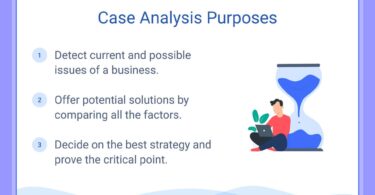Reprinted courtesy Jeff Korentayer from: https://arcanum.ca/
We’re talking about “What is ‘Sequential Timeline Therapy’?” And today we’re going to be looking at the history and how we practice it today from that history.
So this is certainly a very familiar concept, the idea of “peeling the onion”. And that is really the idea that disease exists in layers. And the sequence of treatments starts on the outer layer and progressively works in towards the core. So it’s not too difficult to understand of an analogy. And the way I put it here, the complexities of therapeutics can’t be done “all at once”, but must be sequenced rationally (or one step at a time).
Now, if we give kind of a general outline to the history of sequential therapy, the original seeds we actually find back in Dr. Samuel Hahnemann. If we really read his text closely and really understand the concept of what he was talking about, we’re going to see that he actually would not have been against sequential therapy.
He already kind of outlined the basis of it. Next, we’re going to move on to Dr. Jean Elmiger who was a French Swiss doctor and homeopath. And in the 1970s, he wrote a book called Rediscovering Real Medicine. He actually wrote it in French. And then we will finally look at how all of the above was expanded through the work of Steven Decker, Rudi Verspoor and Patty Smith in the 1990s. And then finally, how that research has continued to expand and what that means for our practice of sequential therapy today.
So going back to Dr. Samuel Hahnemann. He says that the newer, stronger disease suspends the weaker one, and then effectively creates a sequence where now this newer disease would need to be cured first. And then what that will reveal is the older disease, kind of comes up from under the surface of that. And then that needs to be treated second or afterwards. So that’s already implicit in Hahnemann, this idea of sequence and the reason why that’s the case.
So that’s really important to understand. And that’s as true as he revealed it then. And it’s true as we practice it today as we go through a patient’s timeline. That has never changed. So as I say, remember that, that is at the basis of everything that we’re going to get into in the next couple of minutes. And I’ll give you just a quick example.
If somebody has an infectious disease, and then that’s suppressed with an antibiotic, well, we’ve now created a sequence of disease where the antibiotics is now the most present disease (it’s kind of the interface, active disease). And what’s behind that, what we’re going to find underneath after we’ve cured the antibiotics disease, we’re going to find the remnants of that original infectious disease there under the surface.
So we’ll treat the antibiotics disease now. And then what we’ll find pops up afterwards is the remnants of the antibiotics disease. So there you go, a mini timeline (a mini sequence) right there in a real life example.
Hahnemann, n in the last years of his life, had a second revolution which was all about the “chronic miasms”. Now, he discovered three, let’s call it four, he was calling something “pseudo-psora”, which now we understand to be tuberculosis. He hadn’t quite gotten a name for it yet. He hadn’t quite figured out how it was different from psora. He just knew there was something different there. So he had the three miasms in his discoveries and he was kind of verging on that fourth.
Now, as I mentioned at the top, we will now go into the 1970s where we had the Swiss doctor and homeopath, Dr. Jean Elmiger. And well, this is the English translation of his book. He was an allopathic doctor. But then he was also trained in homeopathy and other alternative modalities.
And he did something very interesting, which was he used a voll machine, or it’s otherwise known as an electro-acupuncture measuring device. And he used that, basically, to detect in his patients where he was not able to make progress through the usual homeopathic methods.
Using this device, he detected a number of blockages to cure in the patient, such as some very distinct iatrogenic blockages such as vaccination shocks that were in their system. He discovered other shocks, other medical shocks and other kinds of shocks. And, as well, he verified Hahnemann’s three miasms, but he extended that sequence into four primary miasms. So kind of where Hahnemann was coming to – the psora, the tuberculosis, the sycotic and the syphilitic.
And then, Dr. Elmiger, added in the fifth miasm as well, what we now understand is the cancer miasm. So it’s quite an amazing read. And let’s now take Elmiger’s work and we’ll move it forward into the 1990s. That’s where Rudi Verspoor and Patty Smith actually translated his book from the French into the English, and brought his concepts into the English-speaking homeopathic world.
[NOTE : Rudi and Patty wrote a brand new book based on Elmiger’s ideas – it was NOT a translation from the French into English.] So they brought forward his concept of the sequential timeline. But they also have expanded it more into the realm of emotional shocks and traumas.
So if you are in treatment, if you’re familiar with the NSOL remedy, that’s a huge part of the whole emotional timeline. If someone’s had a broken bone, or they’ve had a car accident, or some kind of physical trauma – those are very black and white in the sense that we know when they happened.
Certain days, certain month, certain year, even the time. We’ll often notice like, “Oh, yeah, this happened at 3pm. And I fell off the ladder and this and this happened.” So that part of the timeline is very black and white. But when we get into the emotional timeline, it tends to occur over a longer extended period of time – days, weeks, months years, where an emotional conflict or trauma is going on over time.
But just to put into context, if you’re familiar with the NSOL and the dropper bottle, that’s what we’re getting out with that remedy. More of that long term kind of trauma, which extends beyond just one point in time. The other thing with Rudi Verspoor and Patty Smith’s work, they expanded Elmiger’s five chronic miasms into the eight that we are treating today.
So essentially, there are two chronic miasm per season – spring, summer, fall, winter. Each one of those as far as archetypes, has two distinct miasms. Just putting this into context, that’s what comes now at the end of the timeline and how Rudi and Patty expanded that.
And finally, Where are we at today? So we have, as I say, the sequential timeline that’s even rooted all the way back in Dr. Hahnemann’s work and we have the diseases of constant nature in opposition to the diseases of variable nature. And the dogma of classical homeopathy today really has gotten itself stuck on the diseases of variable nature.
So you’re treating on the basis of symptoms. We’ve spoken to this in previous videos. But as I say, that is a valid aspect of treatment. But as I say, here, it only accounts for perhaps, maybe 5% of treatment success and cures in the whole realm of our whole system of treatment.
So, as I say, rooting this whole idea of the sequential timeline, and the constant diseases versus the variable disease, the very idea of the timeline is based on the idea of Hahnemann’s concept of diseases of constant nature. So if somebody is in that mode of classical prescribing, they don’t understand the sequential treatment. They, conceptually, can’t validate it. In fact, they criticize it. They fight against it.
But it comes down to this concept where Hahnemann distinguished the constant diseases versus the variable diseases. That’s where we really kind of get the grounding for the sequential timeline. And finally, my last point here. Rudi Verspoor and Steven Decker’s work has further expanded (and continues to expand) into the reaches of Anthroposophy, Orgonomy, and even beyond.
Sequential Timeline Therapy is discussed in this video:
https://arcanum.ca/2020/07/08/sequential-timeline-therapy-its-history-and-how-we-practice-it-today/







Irmgard Maria Post work. Mit Nosoden ursachlich wirksam kureren. Leitfaden der Nosodentherapie.